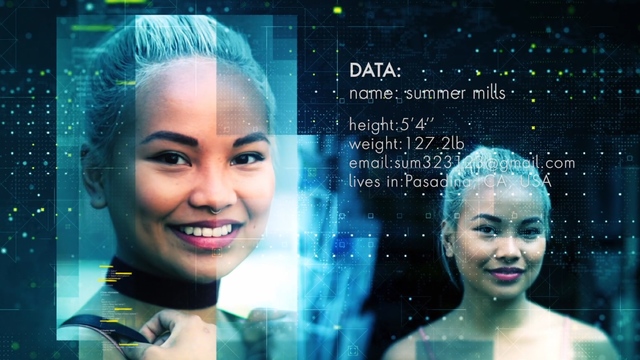What issue can we solve for you?
Type in your prompt above or try one of these suggestions
Suggested Prompt


Consumer Products
Taking On 2021: Top Trends Shaping the Consumer Products Industry
Taking On 2021: Top Trends Shaping the Consumer Products Industry
Against the backdrop of the global coronavirus pandemic, 2020 brought challenges and uncertainties no one was prepared for, transforming how we live and interact with each other. Throughout 2020, consumer products companies made strategic pivots and unforeseen investments to cope with significant changes in demand, shopping behavior, channel shifts and supply chain disruption. With uncertainty likely to continue throughout 2021, organizations must accelerate the development of capabilities to drive overall growth and remain competitive, with a few trends and technologies likely to leave their imprint on the industry.


The global health crisis changed how consumers shop, with greater emphasis on digital channels and new drivers of value. More than ever, it is critical for consumer products companies to meet shoppers in the moment, wherever, whenever and however they desire. With decision journeys encompassing more digital touchpoints and increasing in complexity, shoppers will expect brands to provide “anytime, anywhere” commerce. Organizations using multiple go-to-market approaches for digital commerce will significantly out perform those that do not.
Consumers will look to engage brands and purchase products seamlessly and conveniently through new digital channels and touchpoints. In addition to the continued rise of web and mobile commerce, expect to see a spike in voice-assisted commerce, contactless payments, interactive e-commerce kiosks, livestreaming and shoppable television–where consumers are able to click, find and purchase items directly from their favorite shows. With the growing prevalence of sensors, actuators and microchips (powered by 5G networks) also expect to see major breakthroughs in Internet-of-Things (IoT) based commerce with smart appliances, wearables and a new wave of connected cars poised to lead the way.

With more spending online, a large number of brands have chosen to invest in direct-to-consumer (D2C) programs. D2C models allow consumer products companies measurable benefits, including increased profitability, deeper shopper insights, more control over brand experience and the ability to better differentiate.
More brands, particularly in the food, beverage, beauty and personal care categories, will launch their own D2C programs. The market will become even more competitive as brands look to elevate and expand marketing efforts to win over consumers. In addition to D2C stores and online marketplaces, subscription models and social commerce will increase as brands look to cultivate long-term customer relationships, promote transparency, reduce acquisition cost and increase customer lifetime value through connected D2C experiences.
To propel these efforts, organizations will connect content, data and commerce to create dynamic and differentiated D2C offerings, swinging the pendulum from solely performance-driven tactics to brand storytelling, “always-on” engagement and influence. Expect more brands to embrace a holistic and full-funnel approach to digital commerce, where channels are tightly integrated–enabling shoppers to engage without disruption.

Hyper-personalization allows consumer products companies to move away from just selling something, to being able to anticipate discrete needs and offer highly relevant choices at an exact time and place. Historically, the absence of acquiring first party data and unified customer profiles has made this difficult. But an increased focus on acquiring and investment in customer data platforms (CDP) to stitch data together from multiple sources will help organizations make strides towards hyper-personalization at scale.
The biggest breakthrough in hyper-personalization is likely to emerge from the increasing democratization of artificial intelligence (AI). AI can help brands deliver personalized content, services and experiences by consolidating data from multiple channels, harnessing insights and identifying actionable strategies. As AI becomes more accessible and affordable, expect to see an increasing prevalence of AI use cases across the industry.
Some trends to watch out for include the use of AI for enhanced voice and visual search, dynamic content optimization, micro-targeting and expanded engagement through chatbots, voice assistants and messaging apps.

As competition intensifies across the consumer products landscape, more brands will be shifting focus from selling products to selling outcomes. By wrapping services around products, brands can help shoppers unlock additional value from the things they buy, provide richer experiences and rewards, establish competitive differentiation and generate new revenue.
With renewed focus on delivering “relevance at scale,” expect emerging technology to fuel a new wave of personalized services. This is likely to include augmented reality, curated content and data-powered algorithms to help shoppers make smarter purchase decisions, along with computer-aided manufacturing systems to enable mass product customization. Also prepare for an increase in virtual consultation and online training/coaching to help consumers extract even more value from the products they buy. For some brands, expect to see new services embedded into a range of IoT-connected devices like wearables, smart appliances, “magic mirrors” and other household products.

People remember how companies behave, particularly in times of economic and social crisis. In a society that demands more from companies, adapting brands to deliver relevance at scale isn’t just a good idea–it’s essential for future competitive advantage.
This means creating connections between brand, consumer and the wider community. And, when possible, it means developing collaborative new business ecosystems that bring together shoppers, special interest groups and other companies (often across multiple industries) to help solve society’s more challenging problems.
Brand response to the global pandemic has been inspiring to say the least. Many companies have manifested and reinforced commitment to brand purpose and sustainability through acts of philanthropy, education and restructuring. With global issues still very much at the forefront, expect to see even greater prioritization of purpose and sustainability as a strategic imperative, with purpose-driven brands elevating efforts to become “movement-driven” organizations.
In this new model, brand relationships will evolve from “direct-to,” to “direct-with,” with purpose becoming increasingly democratized and inclusive. Social media, interactive content and direct channels will serve to create communities of consumers united by a common purpose and action. Track-and-trace solutions, including blockchain and smart packaging, will provide consumers with greater transparency, reassurance and empowerment over purchase decisions. Also expect to see a greater emphasis on co-creation and consumer collaboration, with AI-enabled technology allowing customized connections that alert shoppers of their individual contribution–increasing one’s sense of identity, impact and empowerment.
Taking on 2021
COVID-19 has thrown an enormous amount of societal and economic uncertainty on an industry already struggling to keep up with the magnitude and pace of change. But despite the unanticipated nature of these challenges, the truth is that many businesses are simply accelerating their plans–doing more of what they were doing before and doing it quickly.
As we take on 2021, there will be even greater pressure on consumer products companies to improve competitivenes and drive growth by adapting and responding quickly to new challenges and opportunities, accelerating time to market for new experiences and releasing innovations in a “minimum viable” form, rather than trying to perfect them. The manner and speed in which organizations adopt critical capabilities necessary to compete in the post COVID world will have long-term ramifications for future success.
Our Latest Thinking
-
![]()
Consumer Products
Four Ways CP Firms Can Keep Up With the Ever-Changing Consumer
The Digital Life Index, Publicis Sapient’s proprietary global research initiative, explored how the COVID-19 pandemic is affecting the way people view technology, their relationship with brands and how they plan to shop.
-
![]()
Insights
Research on Advancing Data Transformation for Consumer Products Firms
We partnered with Adobe to survey 120 senior executives in large Consumer Product Firms, who told us that they've made investments in data and analytics capabilities, but have not yet uncovered the meaningful insights that can effect change across their entire business. Download the report below for our complete findings and recommendations.
-
![]()
Insights
Unlocking Value: Which D2C Model Is Right For You?
How CPGs can ensure they develop the right strategy to capture the most value from their D2C investment







